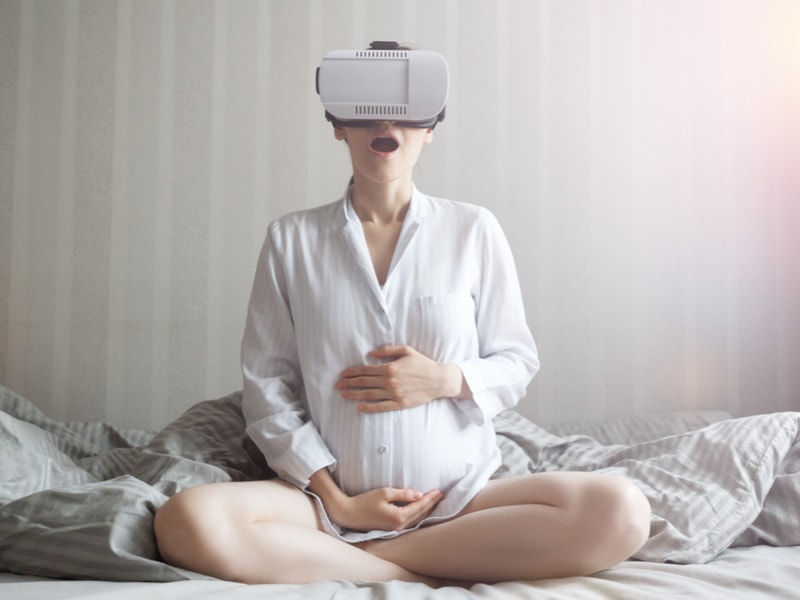
Many people associate the word “virtual reality” primarily with games that build a second reality for the player. However, virtual and augmented realities are increasingly being used in the modern world, including in medical practice.With the help of such technologies, diagnoses are made, mental illnesses are treated, and surgical operations are performed.
Virtual reality for the treatment of mental illness
The most obvious application of virtual reality for medical purposes is post-traumatic therapy. Posttraumatic stress disorder often manifests itself in people who have undergone some kind of severe emotional shock that does not fit into their worldview. This disorder is often suffered by former military personnel, people who have been physically abused.
As a result, they become very anxious and cannot coexist in society. One of the treatments is to make a person survive the event that has shaken them again. Treatment can be accompanied by therapeutic discussion.
At first glance, it seems cruel. But in this way, patients learn to control themselves and not to panic from their memories of stress, the journal says. Phobias and other psychological illnesses are treated in the same way.
VR for diagnostics
The less obvious and even incredible application of virtual technologies is the diagnosis of degenerative neurological diseases. Scientists at Tomsk Polytechnic University and Siberian Medical University are developing an application for VR technology that tests a person’s ability to perform some operations. By wearing glasses, the patient finds himself in an environment with an inclined angle.
At the same time, special sensors detect that the patient’s position in real space is also changing to suit unusual conditions. At the same time, if a person does not have any degenerative diseases, he easily maintains a balance, and if so, then immediately loses its orientation and can even fall, noted in the .
In this way, an early diagnosis of Parkinson’s disease can be made, which can begin at 30 years of age, but it will not show up until 20 years later. Development of scientists can help in early diagnosis of other degenerative diseases.

VR for surgical procedures
Prospectively use VR for medical operations. Doctors from the Institute of Cardiology in Warsaw performed a surgery to eliminate coronary artery thrombosis with the help of Google Glass and a head-on optical monitor, on which a coronary computerized tomographic angiography image was projected.
Angiography is a contrast X-ray examination of blood vessels. The doctor could use voice control to zoom in on the image being transmitted to the device. Thus, he could see what he was doing to the smallest detail.
Virtual reality technologies are very much in demand in the visualization of operations – their shooting. But there are difficulties in the technical part: some operations require jewelry work, and to convey the clarity of the image, you need to shoot in very high resolution.
The quality of the image in glasses will be lost due to not quite high technology development (we are still able to see pixels in glasses). Also VR is in demand in simulators of operations, when the surgeon can practice on virtual patients. Slows down the development of this technology in the need for highly sensitive controllers.
VR against pain
A separate topic for VR medical research is pain relief. When a person plays the game with the help of virtual reality technology, watching beautiful landscapes in the glasses VR, in general, distracts his attention, he is more resistant to pain.
The researchers asked more than 25 volunteers to immerse their fingers in cold water and keep them there until the unpleasant sensations become unbearable.Some of the volunteers played the game with VR glasses. Tests showed that those who wore glasses were more resilient to pain than others.
With VR, you can even relieve the pain of childbirth and make the process more convenient for women, as they receive commands about what to do at any given moment through the glasses. Distraction is also useful for children who are afraid of any medical procedures.
Virtual and augmented reality can also treat phantom pains. These are pains that occur in nonexistent limbs in amputees. A new method of treating such pains at the Technical University of Chalmers (Sweden). Patient muscles around the amputated limb are joined by sensors that read electrical signals from the brain.
When the brain gives the command to a nonexistent limb to do something, the signal is read. The patient sees on the monitor in front of him or herself how his or her virtual hand has done what he or she would like it to do in reality.
The brain areas responsible for controlling the amputated limb are reactivated. After such therapy, the person suffering from phantom pain feels a significant relief, superior to the effect of other treatments.
VR for exoskeleton
A similar method is used by a group of scientists from several European Union countries to develop an exoskeleton that will obey human mental signals. The signals are read by means of an electroencephalogram, but in order to concentrate one’s thoughts correctly, one needs training. It can be done in virtual reality, says
VR for brainwashing
Virtual and augmented reality technologies are based, in general, on the expansion of the human brain’s perception of the world around it. The theory that these technologies can also create a placebo effect can be found on the Internet.
A well-known phenomenon is that a person feels relief from a medicine that is not. The patient may know that sugar is in the tablet instead of the drug, but the effect may still be obvious. Why is this happening?
We all remember Pavlov’s dogs. The doctor fed the animals with a certain signal. Afterwards, when the dogs heard this signal, they started to show saliva, even if there was no food nearby. It’s the same with placebo. For example, if a person takes a painkiller, he gets an endorphin, a substance that reduces pain.
But if you give the same person an empty pacifier, his brain itself can begin to adjust the body to the production of endorphin, because the pill is associated with this. But this is only a theory that does not always work, so medical ethics prohibits giving patients pacifiers: what if the placebo effect does not work?
With virtual and augmented reality, placebo effects can be organized in many ways. For example, to show a patient how his white blood cells chase “bad” bacteria and then destroy them.
Or show him himself, healthy and walking with his friends. How this works is not yet well understood, but in one way or another, the psychological state of the patient plays an important role in his recovery.
The speed of implementation of VR in medicine depends primarily on the field of medicine itself, as well as on investment. After all, this is not just a scientific development, but at the same time a large amount of data on the indicators of human activity, which should be analyzed in terms of the application of technologies of virtual and augmented reality.
